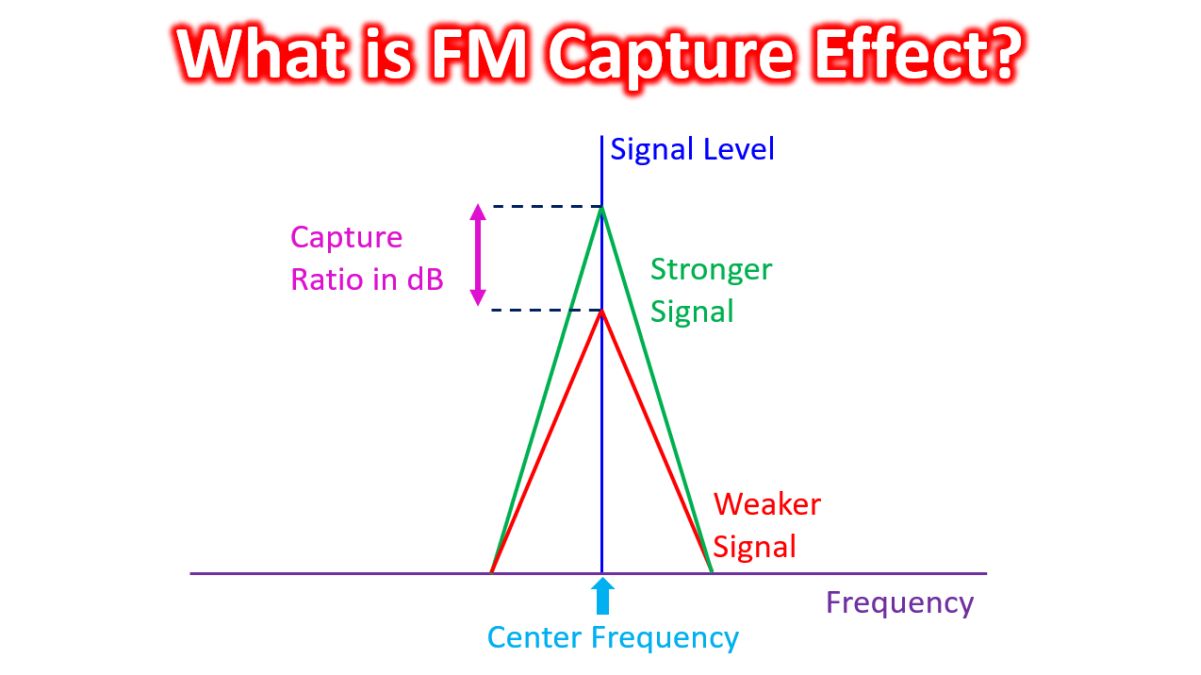What is FM Capture Effect?
FM Capture Effect is the complete suppression of the weaker signal when two signals on same frequency are simultaneously received by an FM receiver. This typically occurs at the FM receiver’s limiter circuit. This is in sharp contrast to what happens in an AM receiver in which audio from both signals get mixed up. How strong the capture effect is, may depend on the receiver’s circuitry. How well the receiver rejects a second weaker signal on the same frequency is known as its capture ratio. Capture ratio is measured as the lowest ratio of the power of the two signals that will result in suppression of weaker signal. In case of FM, the stronger signal needs to be only twice as powerful as the weaker signal, while in case of AM, the stronger signal will have to be twenty times stronger to avoid objectionable interference!

Even though it was mentioned that FM Capture effect occurs in case of two signals on the same frequency, unlike in AM, there is no constant carrier frequency in case of FM. The frequency deviates according to the modulating signal, which is the characteristic of frequency modulation or FM. In AM or amplitude modulation, it is the amplitude of the carrier which changes with the level of modulation. Of course there will be side bands on either side in amplitude modulation. Instead of carrier, in FM we think of centre frequency, with deviation to either side according to the modulating signal.
Now what is the limiter in an FM receiver circuit? Limiter is a circuit which is used before the demodulator to limit too much variations in amplitude of the received signal which might interfere with the FM detection circuitry. Thus the limiter circuit flattens the peaks of FM signal before delivery to the demodulator. Limiter typically sees the the weaker signal as an interfering signal compared to the stronger signal. Weaker signal produces fluctuations in the amplitude of the stronger signal received simultaneously. This fluctuation is removed as the peaks of the received signal are clipped by the limiter circuit. This clipping of the amplitude does not affect FM detection as it looks only at frequency deviation and not at the amplitude of the signal, unlike in AM demodulator.
When there is ‘doubling’ in usual HF amateur radio transmission, when two operators inadvertently transmit on same frequency, we hear a garbled up voice, except when one station is extremely strong. But this is unlikely to occur in FM transmissions on simplex mode, repeaters or FM satellites. Only the stronger signal gets through, while the other signal gets suppressed. Most of us who have travelled long distance would have noticed this in our FM radios. The radio suddenly switches from one station to another operating on the same frequency in another city. Sometimes when we follow a tortuous route in hilly terrain the stations may switch between each other multiple times in a border zone. This is because in different terrains, the intensity of the received signal from the two stations varies, making one stronger than the other in certain regions and vice versa.
Another important aspect of FM Capture effect is while discussing the airband or communication between aircraft and the control tower. In airband, FM is not used as capture effect could suppress another needed signal especially in case of emergency communication. Aircraft communication uses only AM. This facilitates breakin to an ongoing communication by the air traffic control or another aircraft. Pilots will be able to hear both the air traffic control and another simultaneous emergency transmission from another aircraft, which could be important in avoiding accidents. Another situation in which FM capture effect can become significant is in regions where multiple wireless FM mics operating on same frequency are operated in a small area.